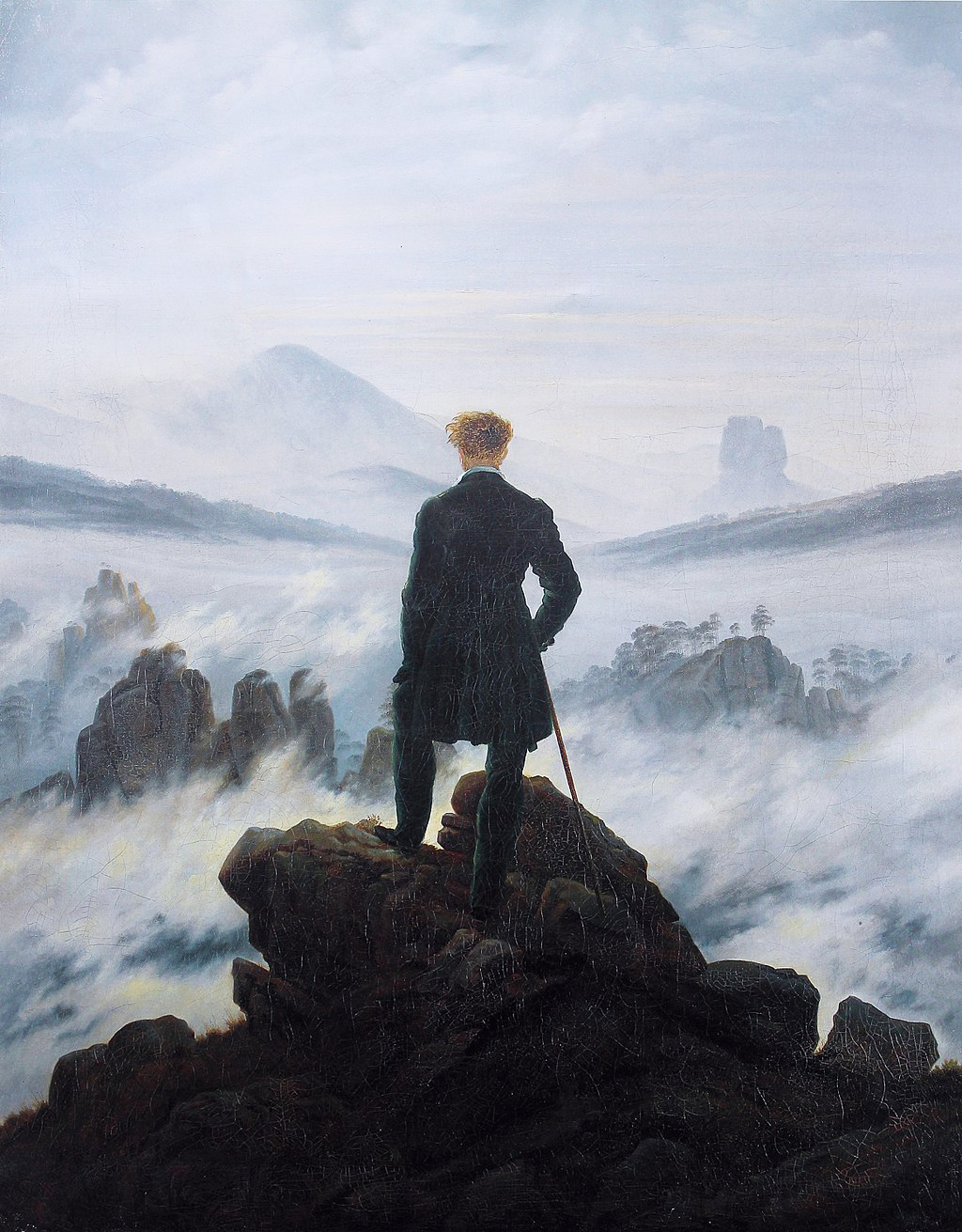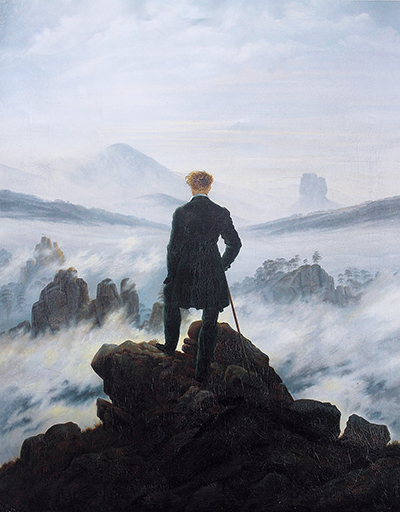Wanderer above the Sea of Fog, or Der Wanderer über dem Nebelmeer, to give it it's original German title, is the most famous painting from the career of German Romanticist painter, Caspar David Friedrich. It was finished in 1818 and now resides at the Kunsthalle Hamburg in Hamburg, Germany.
"...Close your physical eye, so that you may see your picture first with the spiritual eye. Then bring what you saw in the dark into the light, so that it may have an effect on others, shining inwards from outside..."
The style of this painting is instantly recognisable as the work of Friedrich, with a foreground figure superimposed against a stunning landscape scene. This style of composition helps the viewer to feel very much a part of the painting which was one of the strengths of this famous German painter. Landscape scenes of Germany continued throughout his career but not always with a figure in the foreground, despite that though, it remains very much a signature of his career. It is common for artists to become famous for just one artwork, despite having produced so much during their lifetime and Friedrich can be considered inseparable to Wanderer above the Sea of Fog. It has also been promoted to be considered one of the finest contributions to the entire Romanticist movement.
In this memorable artwork there is a flurry of mist that drifts across the landscape as the key figure stands tall, looking down on this mountainous setting. He is smartly dressed, suggesting he holds a powerful position but the way in which his back is turned to the viewer, and that we cannot see his face, leaves a mysterious element to this painting. Who is he? What is he doing? The viewer is left to debate what appears before their eyes. We have included a larger image of the painting at the bottom of this page so that you can appreciate even more of the detail added by artist Friedrich.
The figure in this scene is dressed in a smart overcoat, coloured dark green (you may not be able to make out this colour in the photograph), and holds a brown walking stick in his right hand. This suggests age and experience, but he holds it at an angle which oozes strength and confidence. His hair is untidy, suggesting that the wind has unsettled an otherwise groomed individual. He cares not, for his focus is entirely taken by the mass of fog that sweeps across the landscape in front of him. The rocks on which he stands are darkened, allowing the rest of the scene to drift into the correct perspective, with a greater brightness. It also helps to focus the eye on the gentleman in the foreground. He also wears a shirt below his coat and also solid boots which give a picture of comfort and confidence within these challenging conditions.
Artist Friedrich separates the scene into three or four sections, altering the level of brightness on each one in order to build this sense of perspective. Beyond the initial foreground where the dark figure stands in awe, there is then immediately in front of him another section of rock with trees that dots out from above the clouds. There is some vegetation, but generally the scene is of a relatively barren environment, deep into the tall mountains. This section dots jutting shapes vertically up to the sky right across the canvas. Most is partially covered by fog, but a few rocks of the left hand side can be seen without any impediment.
Perhaps due to the perils of translations, this German painting is sometimes given different names in English, beyond the generally accepted name of Wanderer above the Sea of Fog which we have defaulted to. Others have referred to this piece as Wanderer above the Mist or Mountaineer in a Misty Landscape. Whatever the disagreement, the image itself remains the artist's signature artwork and also a key highlight in the achievements of the European Romanticist movement. Other notable members of the group included the likes of Eugene Delacroix, who gifted us the likes of Liberty Leading the People, Death of Sardanapalus and Christ on the Sea of Galilee, as well as British landscape painter JMW Turner who is most famous for The Fighting Temeraire.
Whilst being a major highlight in the collection of the Kunsthalle Hamburg in Germany, Wanderer above the Sea of Fog stands alongside several highly significant paintings including the likes of Madonna by Edvard Munch, Jacob Restaurant by Max Liebermann, Revolution of the Viaduct by Paul Klee, Phryne before the Areopagus by Jean-Léon Gerome and Nana by Edouard Manet. You will also find contributions from the Old Masters, such as Francisco de Goya, Rembrandt van Rijn, Peter Paul Rubens, Jacob Isaacksz van Ruisdael and Giovanni Battista Tiepolo.





